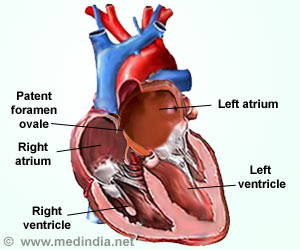Prompt use of an automated external defibrillator, or AED, can greatly increase the survival rates of people who suffer a cardiac arrest.

Current guidelines suggest areas associated with the highest risk of cardiac arrest should be targeted for AED deployment, after they have been placed in obvious high-traffic areas such as transportation hubs or major sports venues. But it's not clear how to identify these "cardiac hot spots."
Researchers at the University of Toronto and St. Michael's Hospital have developed a new mathematical formula to optimize the placement of costly AEDs in areas where they could do the most good. Their results were published in the journal Circulation.
Timothy Chan, an engineering professor at the U of T's Faculty of Applied Science & Engineering, looked at the locations of all 1,310 public cardiac arrests in Toronto between December 2005 and July 2010 and the locations of all 1,699 AEDS registered with Toronto Emergency Medical Services.
He found that 304 cardiac arrests occurred within 100 metres of at least one AED (23 per cent). One hundred metres was chosen as the yardstick because it's the approximate distance a bystander could transport an AED in a 1.5-minute walk—the maximum recommended by the American Heart Association.
There were almost three times as many public cardiac arrests in downtown Toronto as the rest of the city – 3.5 per square kilometer per year vs. 0.4 – said Professor Chan, who worked on the study with Dr. Laurie Morrison of St. Michael's Hospital. Almost half of all downtown cardiac arrests were near an existing AED compared to only 17 per cent those outside of downtown.
Advertisement
"Reducing the distance a bystander needs to travel by 20 metres or up to 40 meters in a roundtrip has the potential to save close to half a minute in response time," said Dr. Morrison, an emergency medicine specialist.
Advertisement
Dr. Morrison heads Rescu, the largest research team of its kind in Canada dedicated to improving out-of-hospital resuscitation.
Professor Chan said his mathematical model is more accurate than a population-based model, in which AEDs are placed in areas of densest daytime population.
"Our optimization model should be viewed as a decision-support tool to help prioritize placement of AEDs, make efficient yse of public, donor or private funds directed toward public access defibrillator programs, and potentially maximize survival on the basis of geographic patterns of cardiac arrest," said Professor Chan. "Because AEDs are expensive and cannot be placed everywhere, our model allows a decision-maker to quantify the trade-off between the number of AEDS deployed and coverage."
While it was not part of the research paper, Professor Chan used his mathematical model to indicate the top 10 cardiac hot spots in Toronto not currently covered by AEDs:
- Jarvis and Gerrard (nearby buildings include the Inglewood Arms, Jarvis George Cooperative Homes, Ryerson International Living Learning Center, residential homes)
- Queen and Bay(Sheraton hotel, Nathan Philips Square, The Bay)
- Jarvis and Dundas (Hilton hotel, co-op housing, residential)
- Brimley and Progress(Scarborough Town Center)
- Eglinton and Warden(shopping plaza, industrial buildings)
- Wellington and Strachan (medical office building, residential)
- Dundas and Spadina(Chinatown, shopping plaza)
- Queen and Shelbourne(Moss Park, street-level commercial/retail)
- Danforth and Pape(Toronto Public Library, street-level commercial/retail, Pape Station, residential)
- Jarvis and Adelaide(Saint James Park, Holiday Inn)
Source-Eurekalert








